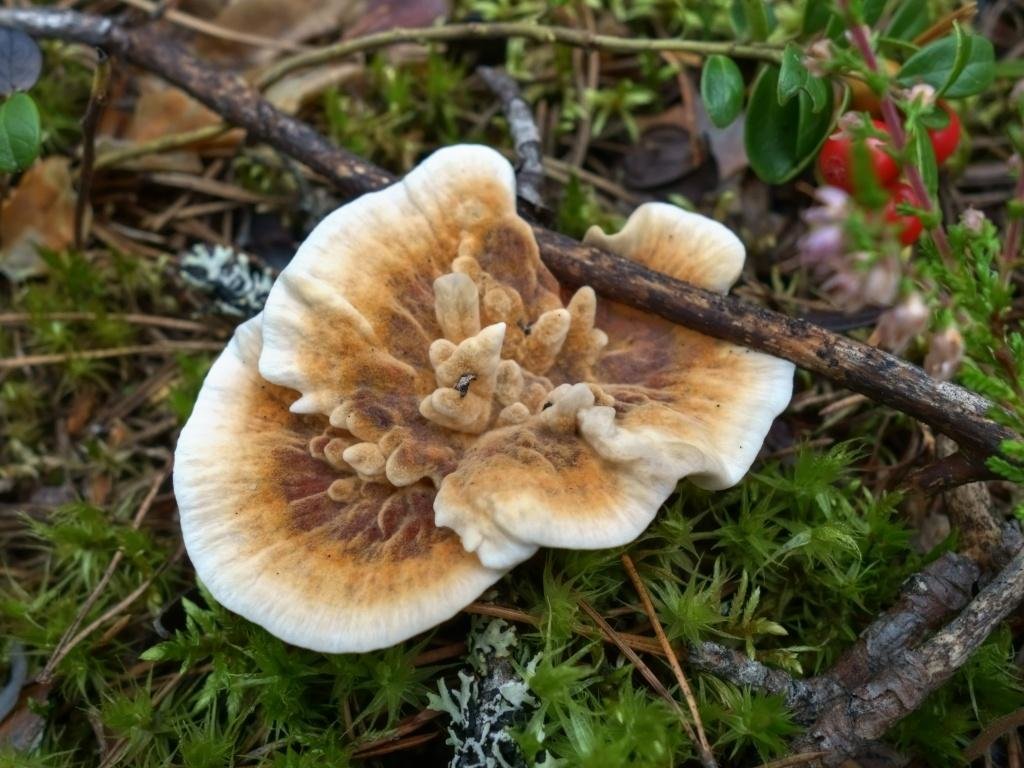Hydnellum orange (Hydnellum aurantiacum)
- Diviziona: Basidiomycota (Basidiomycetes)
- Fizarana: Agaricomycotina (Agaricomycetes)
- Kilasy: Agaricomycetes (Agaricomycetes)
- Sobika: Incertae sedis (tsy azo antoka ny toerana)
- Ordinatera: Thelephorales (Telephoric)
- Fianakaviana: Bankeraceae
- Karazana: Hydnelum (Gidnellum)
- Type: Hydnellum aurantiacum (Orange Hydnellum)
- Calodon aurantiacus
- Hydnellum complectipes
- Orange fruit
- Hydnum stohlii
- Phaeodon aurantiacus

Fruit bodies of Hydnellum orange up to 15 centimeters in diameter, slightly concave, on a stem up to 4 centimeters long.
The upper surface is more or less bumpy or wrinkled, velvety in young mushrooms, initially white or cream, becoming orange to orange-brown and brown with age (while the edge remains light).
The stem is orange, gradually darkening to brown with age.
The pulp is hard, woody, according to some reports without a special taste and with a floury smell, according to others with a bitter or floury taste without a pronounced odor (obviously, this depends on the growing conditions), orange or brownish-orange, on the cut with pronounced striping (but without light and bluish shades).
Hymenophore in the form of spines up to 5 millimeters long, white in young mushrooms, turns brown with age. Spore powder is brown.
Hydnellum orange grows singly and in groups in mixed and pine forests. Season: late summer – autumn.
The old orange hydnellum resembles the old rusty hydnellum, which differs from it in its uniform brown upper surface (without a light edge) and the dark brown color of the flesh on the cut.
Gidnellum orange is inedible due to the hard pulp. Can be used to dye wool in green, olive green and blue-green tones.
Photo: Olga, Maria.









